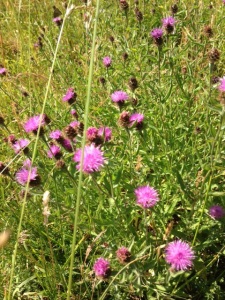Most of the female poets I read as a young woman had no children, or one. They steered clear of sexual relationships with men or, not having access to birth control, sought abortions. This fact had a terrible fascination for me in my early twenties, especially since the zero-or-one rule also held among so many female literary scholars. I had always been certain that I wanted to bear or adopt children and certain that I need to write. Exactly how difficult would it be, though, to manage both?
Later I met many women poets who, possessed of more choices than the modernists, elected not to have children or raised multiple kids. I also know too many women poets w ho grieve infertility. I’m luckier than most in that I conceived one child immediately, the other after six months of trying, and never faced an unwanted pregnancy. If I had miscarriages, they were early ones, during that uncertain era when home tests weren’t so prompt. Bedrest from severe nausea and then bouts of postpartum depression didn’t feel lucky at the time, but people took care of me. I’ve muddled along all right since, herding poems and little people. Sometimes those activities nourished each other and sometimes they competed brutally, but I grabbed my good luck by the short hairs and made choices I still feel basically fine about.
ho grieve infertility. I’m luckier than most in that I conceived one child immediately, the other after six months of trying, and never faced an unwanted pregnancy. If I had miscarriages, they were early ones, during that uncertain era when home tests weren’t so prompt. Bedrest from severe nausea and then bouts of postpartum depression didn’t feel lucky at the time, but people took care of me. I’ve muddled along all right since, herding poems and little people. Sometimes those activities nourished each other and sometimes they competed brutally, but I grabbed my good luck by the short hairs and made choices I still feel basically fine about.
I still think, though, about those modernist abortions. When on a recent July morning my spouse, two teens, and I were bound for Dorset beaches in a hired car, I programmed the GPS for a stop in the village of Shillingstone. Edna St. Vincent Millay headed there in July, 1922 with her mother, Cora, and some friends. Edna was sick and broke and unable to write. She was also pregnant after a Parisian fling. Cora Millay, a nurse, helped her daughter have an abortion there.
I don’t have a lot of information about that summer, just what’s in the Milford biography. Back then Shillingstone consisted of a “winding, unpaved street, a few shops and small houses, many with thatched roofs” (238). The group of women rented a house (I don’t know the address but am including photos anyway for local flavor). Edna turned a hay shed into a studio. Edna’s friends and even her sister back home didn’t know the ulterior motive for the program of long walks on the downs, horseback riding, and stews of wild greens: Cora was searching for abortives listed in an old herbal guide. She did, in fact, induce Edna to miscarry during the first few weeks of the pregnancy.
Edna turned a hay shed into a studio. Edna’s friends and even her sister back home didn’t know the ulterior motive for the program of long walks on the downs, horseback riding, and stews of wild greens: Cora was searching for abortives listed in an old herbal guide. She did, in fact, induce Edna to miscarry during the first few weeks of the pregnancy.
I’m no botanist, so while I looked up some pictures of alkanet, the key herb in the equation, and went poking along the footpaths, I never found the right blue flowers. I saw dandelions, thistles, and nettles—all named by Edna in a letter as part of the maternal recipe—and trefoil, mentioned in Cora’s notes. Daisies and yarrow were blooming, and mallow purpled every roadside.  My own daughter was alarmed that I was even looking, as if medicinal herbs might jump up and dose us against our will.
My own daughter was alarmed that I was even looking, as if medicinal herbs might jump up and dose us against our will.  To be fair, it is a creepy errand to conduct with your children. But this is the history behind my own good luck and it should be in my daughter’s rearview mirror, too.
To be fair, it is a creepy errand to conduct with your children. But this is the history behind my own good luck and it should be in my daughter’s rearview mirror, too.

7 responses to “Why Edna St. Vincent Millay ate herbs in Dorset”
“…herding poems and little people. Sometimes those activities nourished each other and sometimes they competed brutally…” As the saying goes, truer words were never spoken. Fascinating side trip!!
LikeLike
Thanks! And I think I found alkanet this morning, right here in Bath, near the canal…
LikeLiked by 1 person
Lesley, this would be a very good expanded essay that you should publish. Just sayin’.
LikeLike
Glad to hear it, since I was thinking so, too!
LikeLike
Another vote for you to expand this one…shoot, it could be a book. Please make it so.
LikeLike
As a childless writer, this is endlessly fascinating for me. Considering Plath and her struggles, among others, thank you so much, I would want to read more if more is written (and by you) especially.
LikeLike
[…] still returning to those poems with more to think about, more to say. As I’ve written in a previous post, I recently became fascinated with her reproductive history, particularly the pregnancy she […]
LikeLike